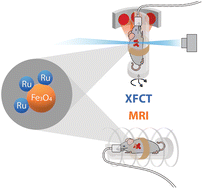Newsfeed
Olle Engkvists Stiftelse har gett anslag om 1,5 miljoner kronor till professor Muhammet Toprak, KTH
Projektets fokus är att upptäcka nya miljövänliga elektroniska material och processer för minskad miljöpåverkan. Genom att använda mikrovågsassisterad syntes, olika nano-bläckformuleringar och 3D-printing kommer tid, energi och mängd förbrukade kemikalier kunna minskas avsevärt jämfört med konventionella metoder.
Read more on the OES Foundation website.
--------------------- o ----------------- o --------------------- o ----------------- o ---------------------
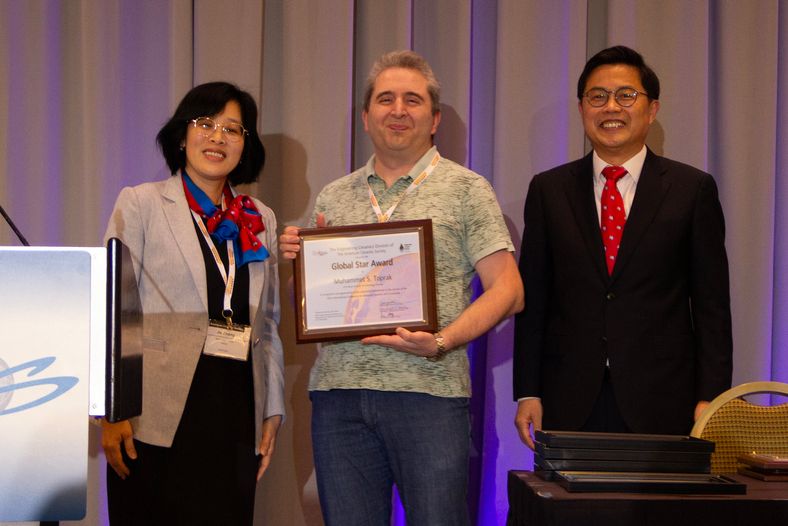
Muhammet Toprak, professor of materials chemistry, received the Global Star Award from the American Ceramic Society. Toprak has served as co-lead organizer of the "International Symposium on Functional Nanomaterials and Thin Films for Sustainable Energy, Environmental, and Health Applications" symposium at ICACC since 2019.
The American Ceramic Society is a professional community of global leaders in the field of ceramics and glass. The society is made up of more than 11,000 professionals from more than 70 countries.
An announcement regarding the Global Star Award was made during the 48th International Conference and Exposition on Advanced Ceramics and Composites (ICACC 2024) on Jan. 29 2024, in Daytona Beach, Florida.
The Global Star Award recognizes active volunteers for their contributions to the Engineering Ceramics Division (ECD) of American Ceramic Society and to the technical program of the International Conference & Exposition on Advanced Ceramics & Composites (ICACC) meeting. Award recipients are selected by the ICACC Program Chair with agreement from the ECD Executive Committee. The awardees receive a certificate of achievement at the ICACC meeting's Plenary Session.
---------- o ---------- o ---------- o ---------- o ---------- o ---------- o ---------- o ---------- o ---
A short article is published in Elektroniktidningen's March issue about our research on Thermoelectric Materials. The issue and the article can be access through the following link:
Article: https://issuu.com/etndigi/docs/etn2303ld/16
---------- o ---------- o ---------- o ---------- o ---------- o ---------- o ---------- o ---------- o ---
Our recent article on: XFCT-MRI hybrid multimodal contrast agents for complementary imaging (Open Access)
Can be reached at: https://pubs.rsc.org/en/content/articlelanding/2023/NR/D2NR05829D
Abstract
Multimodal contrast agents in biomedical imaging enable the collection of more comprehensive diagnostic information. In the present work, we design hybrid ruthenium-decorated superparamagnetic iron oxide nanoparticles (NPs) as the contrast agents for both magnetic resonance imaging (MRI) and X-ray fluorescence computed tomography (XFCT). The NPs are synthesized via a one-pot polyol hot injection route, in diethylene glycol. In vivopreclinical studies demonstrate the possibility of correlative bioimaging with these contrast agents. The complementarity allows accurate localization, provided by the high contrast of the soft tissues in MRI combined with the elemental selectivity of XFCT, leading to NP detection with high specificity and resolution. We envision that this multimodal imaging could find future applications for early tumor diagnosis, improved long-term treatment monitoring, and enhanced radiotherapy planning.
KTH Materials Platform Feed in LinkedIn
https://www.linkedin.com/feed/update/urn:li:activity:7027214525003108353/
---------- o ---------- o ---------- o ---------- o ---------- o ---------- o ---------- o ---------- o ---
IMPACT Research case listed at Albanova-Nanolab
https://albanova-nanolab.org/impact/
---------- o ---------- o ---------- o ---------- o ---------- o ---------- o ---------- o ---------- o ---
Open lecture: Can paint generate electricity?
Batteries in wearables and low-power applications could be replaced – with paint! Welcome to this popular science lecture during Nobel Prize Week.
Time: Wed 2022-10-05 12.15 - 13.00
Location: Sydöstra galleriet, KTH Biblioteket/KTH Library
Video link: Zoom
Language: English
Lecturer: Muhammet Toprak, professor in Materials Chemistry at KTH

A piece of film is coated in thermoelectric ink.
By using nanoscale chemistry, devices covered in a particular kind of paint will be able to convert their heat into electricity.
Read more in the news article Ink coating could enable devices powered by heat
In this popular science lecture, Muhammet Toprak, Professor in Materials Chemistry, will explain the research behind this technology.
You can follow the lecture by Zoom or in the KTH Library.
---------- o ---------- o ---------- o ---------- o ---------- o ---------- o ---------- o ---------- o ---
Selected our article as an example on Sustainability research - Ink coating to enable devices powered by heat
The work has been performed in collaboration with University of Warwick and Universitat de València
---------- o ---------- o ---------- o ---------- o ---------- o ---------- o ---------- o ---------- o
Ink coating could enable devices powered by heat
Researchers at KTH report that they are closing in on a way to replace batteries for wearables and low-power applications in the internet of things (IoT). The answer lies in an ink coating that enable...
Article mentions in Media
FORSKNING.SE: https://www.forskning.se/2022/08/16/farg-omvandla-varme-el/
AZOM.COM: https://www.azom.com/news.aspx?newsID=59355
SWIPENEWS: http://swipenews.co/novel-thermoelectric-coating-feels-the-power/
---------- o ---------- o ---------- o ---------- o ---------- o ---------- o ---------- o ---------- o
Publication
A very important achievement in the field of Thermoelctric Hybrid Materials...
Thermoelectric Inks and Power Factor Tunability in Hybrid Films through All Solution Process, ACS Applied Materials & Interfaces, DOI: 10.1021/acsami.1c24392
---------- o ---------- o ---------- o ---------- o ---------- o ---------- o ---------- o ---------- o
-
New nanoparticle design paves way for improved detection of tumors

Published Jun 02, 2021
Nano-sized particles have been engineered in a new way to improve detection of tumors within the body and in biopsy tissue, a KTH research team reports. The advance could enable identifying early stag...
Read the article
---------- o ---------- o ---------- o ---------- o ---------- o ---------- o ---------- o ---------- o
Publication
"Optical and X-ray Fluorescent Nanoparticles for Dual Mode Bioimaging," ACS Nano, 10.1021/acsnano.0c10127
---------- o ---------- o ---------- o ---------- o ---------- o ---------- o ---------- o ---------- o
ranked #36 in Sweden among Top Scientists for 2022
Research.com, a prominent academic platform for scientists, has just published the 2022 Edition of our Ranking of Top 1000 Scientists in the area of Materials Science.
According to their listing I have ranked #36 in Sweden as well as #3165 in the world ranking.
Research.com ranking is constructed using the H-index data gathered by Microsoft Academic and includes only prominent scientists with an H-index of at least 40 for scientific papers published in the field of Materials Science.
See the full world ranking here: https://research.com/scientists-rankings/materials-science
Entire ranking for Sweden here: https://research.com/scientists-rankings/materials-science/se
---------- o ---------- o ---------- o ---------- o ---------- o ---------- o ---------- o ---------- o
KTH-forskarna med störst genomslag – hela listan
Drygt 160 forskare från KTH räknas bland världens allra främsta enligt ny statistik. De topprankade forskarna från KTH representerar 48 ämnen, alltifrån energiteknik och tillämpad fysik till filosofi och miljövetenskap.
Totalt 162 av KTH:s forskare finns i toppen när man ser till antalet citeringar under hela deras karriär. Det visar en offentlig databas med toppforskare från hela världen som statistikern John Ioannidis från Stanford University publicerat.
Listan omfattar de två procent mest citerade forskarna inom 22 vetenskapliga discipliner och 176 underområden. Underlaget, forskningsdatabasen Scopus, bygger på citeringar fram till och med 2019 och omfattar totalt 100 000 forskare över hela världen.
– Med tanke på den alltmer ökande konkurrensen är det imponerande att så många KTH-forskare finns med högt upp på listan. Sammanställningen ger en bra indikation på vilka framgångsrika ”veteranforskare” som KTH har, säger Per-Anders Östling, rankingexpert på KTH.
Här är KTH:s 162 topprankade forskare
(Excerpt from: https://www.kth.se/aktuellt/nyheter/kth-forskarna-med-storst-genomslag-hela-listan-1.1037271)
---------- o ---------- o ---------- o ---------- o ---------- o ---------- o ---------- o ---------- o
International Recognition
Data for "Updated science-wide author databases of standardized citation indicators"
Mendeley released the author data set "Updated science-wide author databases of standardized citation indicators". It shows the top 2% scientists in every field and subfield.
I am honoured to be listed in Materials (Enabling and Strategic Technologies), which is a strong recognition of the research works we have been performing through the years.
The data can be accessed through the following link containing different tables, the field wise details are listed in Table S-7 .
https://lnkd.in/eJhTTF4
---------- o ---------- o ---------- o ---------- o ---------- o ---------- o ---------- o ---------- o
Organised / Co-organised Workshops
- Program committee for 46th International Conference And Exposition On Advanced Ceramics And Composites-ICACC2022, Jan 24-28, 2022 | Virtual Meeting, USA.
- Program committee for 45th International Conference And Exposition On Advanced Ceramics And Composites-ICACC2021, Feb 8-12, 2021 | Virtual Meeting, USA.
- Caloric Heating and Cooling, 13-15 July 2020, Netherlands
- 44th International Conference And Exposition On Advanced Ceramics And Composites, S7: 14th International Symposium On Functional Nanomaterials And Thin Films For Sustainable Energy Harvesting, Environmental, And Health Applications, January 26 – 31, 2020, Daytona Beach, FL, USA
- IEEE Nanomaterials and Devices Conference, NMDC 2019, Oct. 27-30 Stockholm, Sweden
- 43rd International Conference And Exposition On Advanced Ceramics And Composites, S7: 12th International Symposium On Functional Nanomaterials And Thin Films For Sustainable Energy Harvesting, Environmental, And Health Applications, January 23 – Feb 1, 2019, Daytona Beach, FL, USA
Cost Action
- CA18132 - Functional Glyconanomaterials for the Development of Diagnostics and Targeted Therapeutic Probes
Recent Publications
- Recent Publication in Nanomaterials
Abstract: X-ray fluorescence computed tomography (XFCT) is an emerging biomedical imaging technique, which demands the development of new contrast agents. Ruthenium (Ru) and rhodium (Rh) have spectrally attractive Kα edge energies, qualifying them as new XFCT bio-imaging probes. Metallic Ru and Rh nanoparticles are synthesized by polyol method, in the presence of a stabilizer. The effect of several reaction parameters, including reaction temperature time, precursor and stabilizer concentration, and stabilizer molecular weight, on the size of particles, were studied. Resultant materials were characterized in detail using XRD, TEM, FT-IR, DLS-zeta potential and TGA techniques. Ru particles in the size range of 1–3 nm, and Rh particles of 6–9 nm were obtained. At physiological pH, both material systems showed agglomeration into larger assemblies ranging from 12–104 nm for Ru and 25–50 nm for Rh. Cytotoxicity of the nanoparticles (NPs) was evaluated on macrophages and ovarian cancer cells, showing minimal toxicity in doses up to 50 μg/mL. XFCT performance was evaluated on a small-animal-sized phantom model, demonstrating the possibility of quantitative evaluation of the measured dose with an expected linear response. This work provides a detailed route for the synthesis, size control and characterization of two materials systems as viable contrast agents for XFCT bio-imaging.
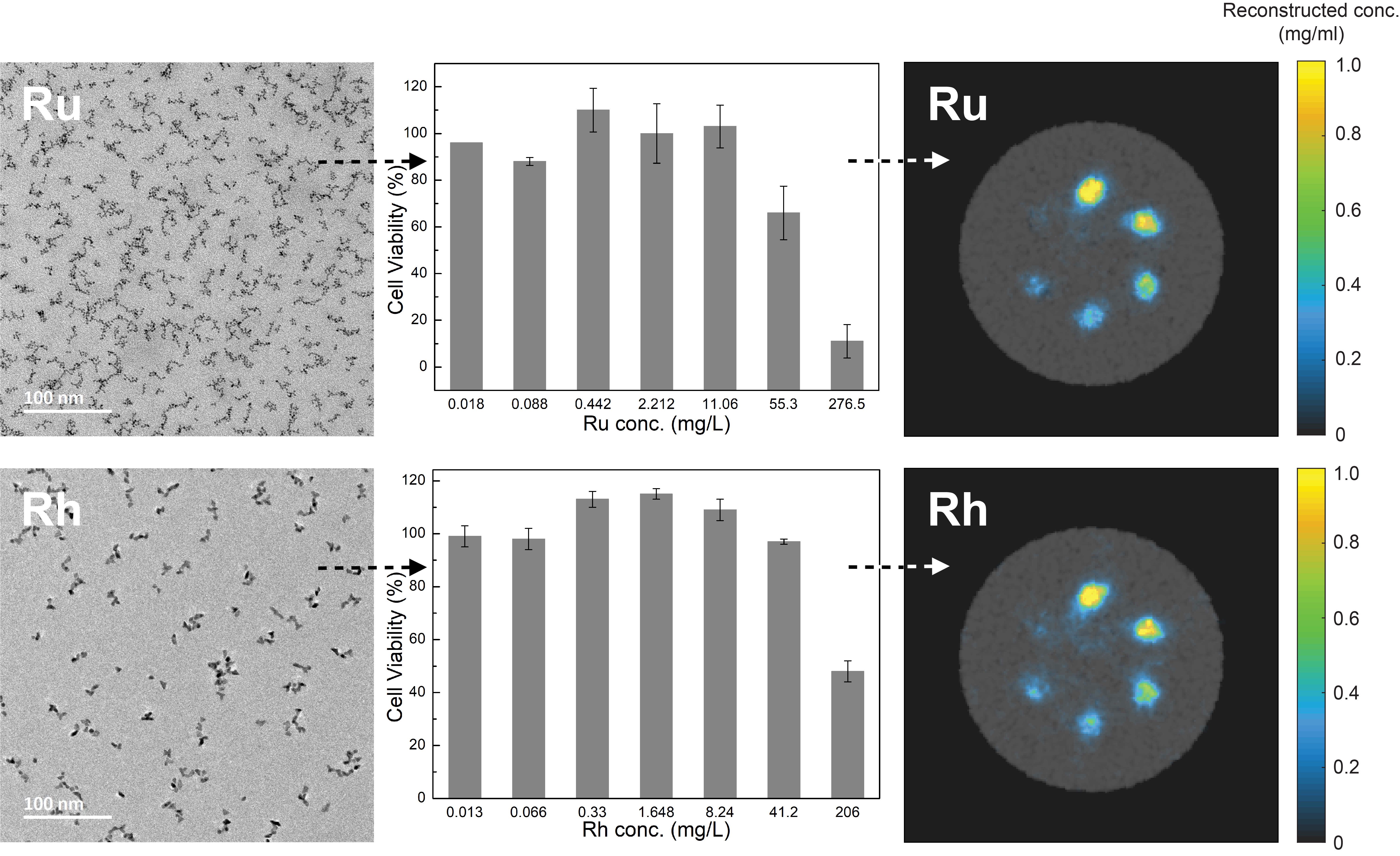
Li, Y.; Shaker, K.; Svenda, M.; Vogt, C.; Hertz, H.M.; Toprak, M.S. “Synthesis and Cytotoxicity Studies on Ru and Rh Nanoparticles as Potential X-Ray Fluorescence Computed Tomography (XFCT) Contrast Agents”. Nanomaterials 2020, 10, 310.
------ o ----- o ------ o ----- o ------ o ----- o ------ o ----- o ------ o ----- o ------ o ----
- Recent Publication in Nanomaterials
Composition Tuning of Nanostructured Binary Copper Selenides through Rapid Chemical Synthesis and their Thermoelectric Property Evaluation
Abstract: Reduced energy consumption and environmentally friendly, abundant constituents are gaining more attention for the synthesis of energy materials. A rapid, highly scalable, and process temperature-sensitive solution synthesis route is demonstrated for the fabrication of thermoelectric Cu2−xSe. The process relies on readily available precursors and microwave-assisted thermolysis, which is sensitive to reaction conditions; yielding Cu1.8Se at 200 °C and Cu2Se at 250 °C within 6–8 min reaction time. Transmission electron microscopy (TEM) revealed crystalline nature of as-made particles with irregular truncated morphology, which exhibit a high phase purity as identified by X-ray powder diffraction (XRPD) analysis. Temperature-dependent transport properties were characterized via electrical conductivity, Seebeck coefficient, and thermal diffusivity measurements. Subsequent to spark plasma sintering, pure Cu1.8Se exhibited highly compacted and oriented grains that were similar in size in comparison to Cu2Se, which led to its high electrical and low thermal conductivity, reaching a very high power-factor (24 μW/K−2cm−1). Density-of-states (DOS) calculations confirm the observed trends in electronic properties of the material, where Cu-deficient phase exhibits metallic character. The TE figure of merit (ZT) was estimated for the materials, demonstrating an unprecedentedly high ZT at 875 K of 2.1 for Cu1.8Se sample, followed by 1.9 for Cu2Se. Synthetic and processing methods presented in this work enable large-scale production of TE materials and components for niche applications.

Hamawandi, B.; Ballikaya, S.; Råsander, M.; Halim, J.; Vinciguerra, L.; Rosen, J.; Johnsson, M.; Toprak, M. Composition Tuning of Nanostructured Binary Copper Selenides through Rapid Chemical Synthesis and their Thermoelectric Property Evaluation. Nanomaterials 2020, 10, 854.
https://www.mdpi.com/2079-4991/10/5/854/pdf
------ o ----- o ------ o ----- o ------ o ----- o ------ o ----- o ------ o ----- o ------ o ----
- Recent Publication in Applied Nanoscience
Click chemical assembly and validation of bio‑functionalized superparamagnetic hybrid microspheres
Abstract: Surface derivatized magnetic nanoparticles have been commonly used for magnetic separation. Facile mechanisms are needed to be developed for the design of bio-functionalized magnetic hybrid materials, where the surfaces can be re-generated for the re-use of the developed platforms. Superparamagnetic iron oxide nanoparticles with a diameter below 10 nm were synthesized via a novel microwave-assisted hydrothermal method in the presence of citrate ions, which allowed to obtain uniform and negatively charged nanoparticles. These were then coupled with Poly-l-lysine (PLL), forming micrometersized self-assembled spherical entities. Cross-linking the PLL within these microspheres with glutaraldehyde stabilized them chemically and mechanically. The active bio-functionality was introduced by a protein grafting methodology, using m-maleimidobenzoyl-N-hydroxysulfosuccinimide ester (SMBS). The Moringa oleifera Coagulant Protein (MOCP) from a seed extract was employed for its characteristic coagulation activity. The performance of the MOCP functionalized microspheres was evaluated as a function of turbidity removal of problematic colloidal clay from water via magnetic separation, resulting in over 80% of activity within 15 min. Surface of these hybrid materials can be re-generated by treatment with alcohol, allowing their easy magnetic separation and re-use. The rapid and strong response with tunable magnetic property makes these hybrid microspheres a powerful tool for many potential applications, due to the general applicability of the developed methodology.
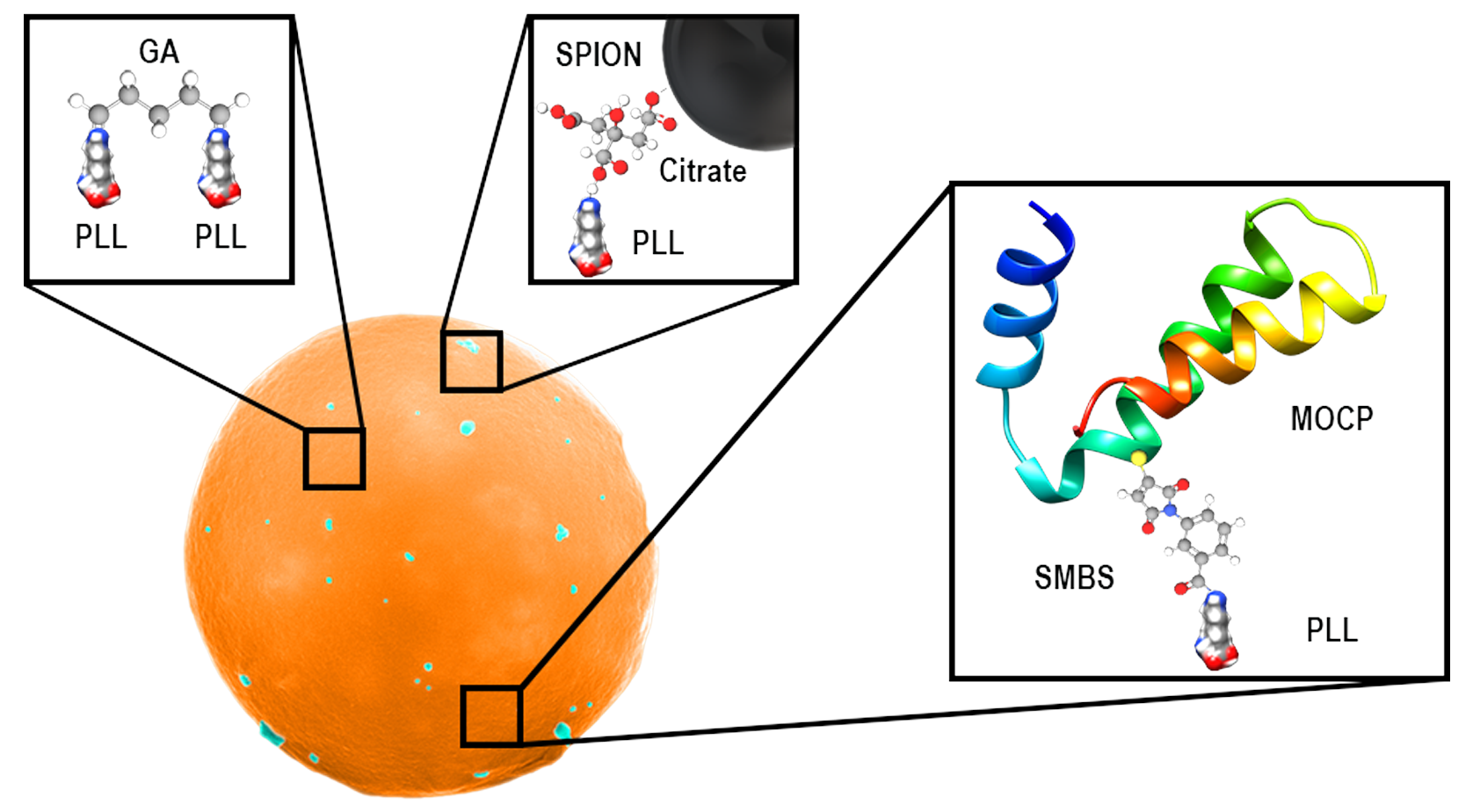
G.M. Saladino, B. Hamawandi, C. Vogt, G.K. Rajarao, M.S. Toprak, "Click chemical assembly and validation of bio‑functionalized superparamagnetic hybrid microspheres", Applied Nanoscience (2020)
http://link.springer.com/article/10.1007/s13204-020-01274-5
------ o ----- o ------ o ----- o ------ o ----- o ------ o ----- o ------ o ----- o ------ o ----
- Recent Publication in MDPI Applied Sciences (Appl. Sci. 2020, 10, 1178; doi:10.3390/app10031178)
Facile Solution Synthesis, Processing and Characterization of n- and p-Type Binary and Ternary Bi–Sb Tellurides
Abstract: The solution synthesis route as a scalable bottom-up synthetic method possesses significant advantages for synthesizing nanostructured bulk thermoelectric (TE) materials with improved performance. Tuning the composition of the materials directly in the solution, without needing any further processing, is important for adjusting the dominant carrier type. Here, we report a very rapid (2 min) and high yield (>8 g/batch) synthetic method using microwave-assisted heating, for the controlled growth of Bi2–xSbxTe3 (x: 0–2) nanoplatelets. Resultant materials exhibit a high crystallinity and phase purity, as characterized by XRD, and platelet morphology, as revealed by SEM. Surface chemistry of as-made materials showed a mixture of metallic and oxide phases, as evidenced by XPS. Zeta-potential analysis exhibited a systematic change of isoelectric point as a function of the material composition. As-made materials were directly sintered into pellets by using spark plasma sintering process. TE performance of Bi2xSbxTe3 pellets were studied, where the highest ZT values of 1.04 (at 440 K) for Bi2Te3 and 1.37 (at 523 K) for Sb2Te3 were obtained, as n- and p-type TE materials. The presented microwave-assisted synthesis method is energy eective, a truly scalable and reproducible method, paving the way for large scale production and implementation of towards large-area TE applications.
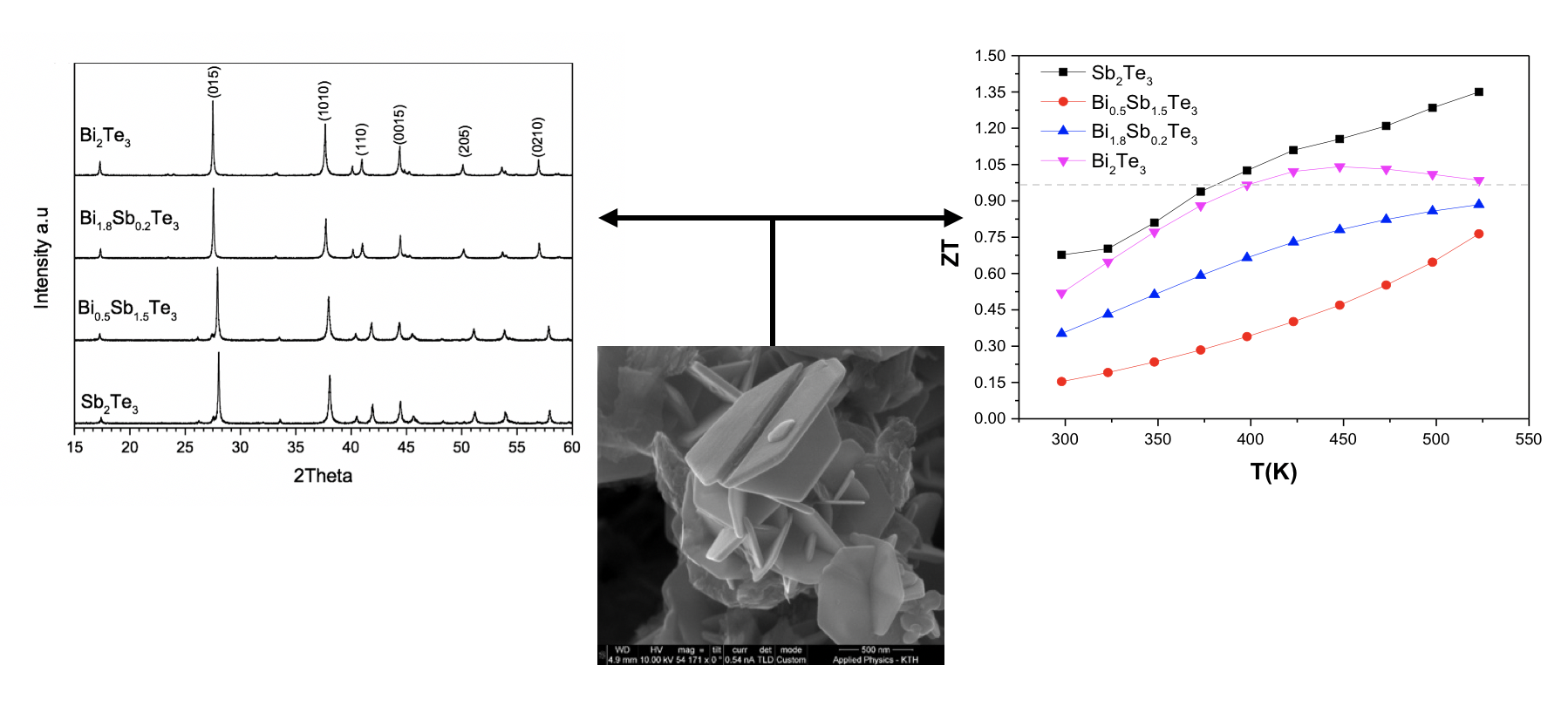
B. Hamawandi, S. Ballikaya, H. Batili, V. Roosmark, M. Orlovská, A. Yusuf, M. Johnsson, R. Szukiewicz, M. Kuchowicz, M.S. Toprak, "Facile Solution Synthesis, Processing and Characterization of n- and p-Type Binary and Ternary Bi–Sb Tellurides" , Applied Sciences, 10, 1178 (2020)
https://www.mdpi.com/2076-3417/10/3/1178
------ o ----- o ------ o ----- o ------ o ----- o ------ o ----- o ------ o ----- o ------ o ----
- Recent Publication in Contrast Media & Molecular Imaging
A Library of Potential Nanoparticle Contrast Agents for X-Ray Fluorescence Tomography Bioimaging
Abstract
Nanoparticles (NPs) have been used as contrast agents for several bioimaging modalities. X-ray fluorescence (XRF) tomography can provide sensitive and quantitative 3D detection of NPs. With spectrally matched NPs as contrast agents, we demonstrated earlier in a laboratory system that XRF tomography could achieve high-spatial-resolution tumor imaging in mice. Here, we present the synthesis, characterization, and evaluation of a library of NPs containing Y, Zr, Nb, Rh, and Ru that have spectrally matched K-shell absorption for the laboratory scale X-ray source. The K-shell emissions of these NPs are spectrally well separated from the X-ray probe and the Compton background, making them suitable for the lab-scale XRF tomography system. Their potential as XRF contrast agents is demonstrated successfully in a small-animal equivalent phantom, confirming the simulation results. The diversity in the NP composition provides a flexible platform for a better design and biological optimization of XRF tomography nanoprobes.
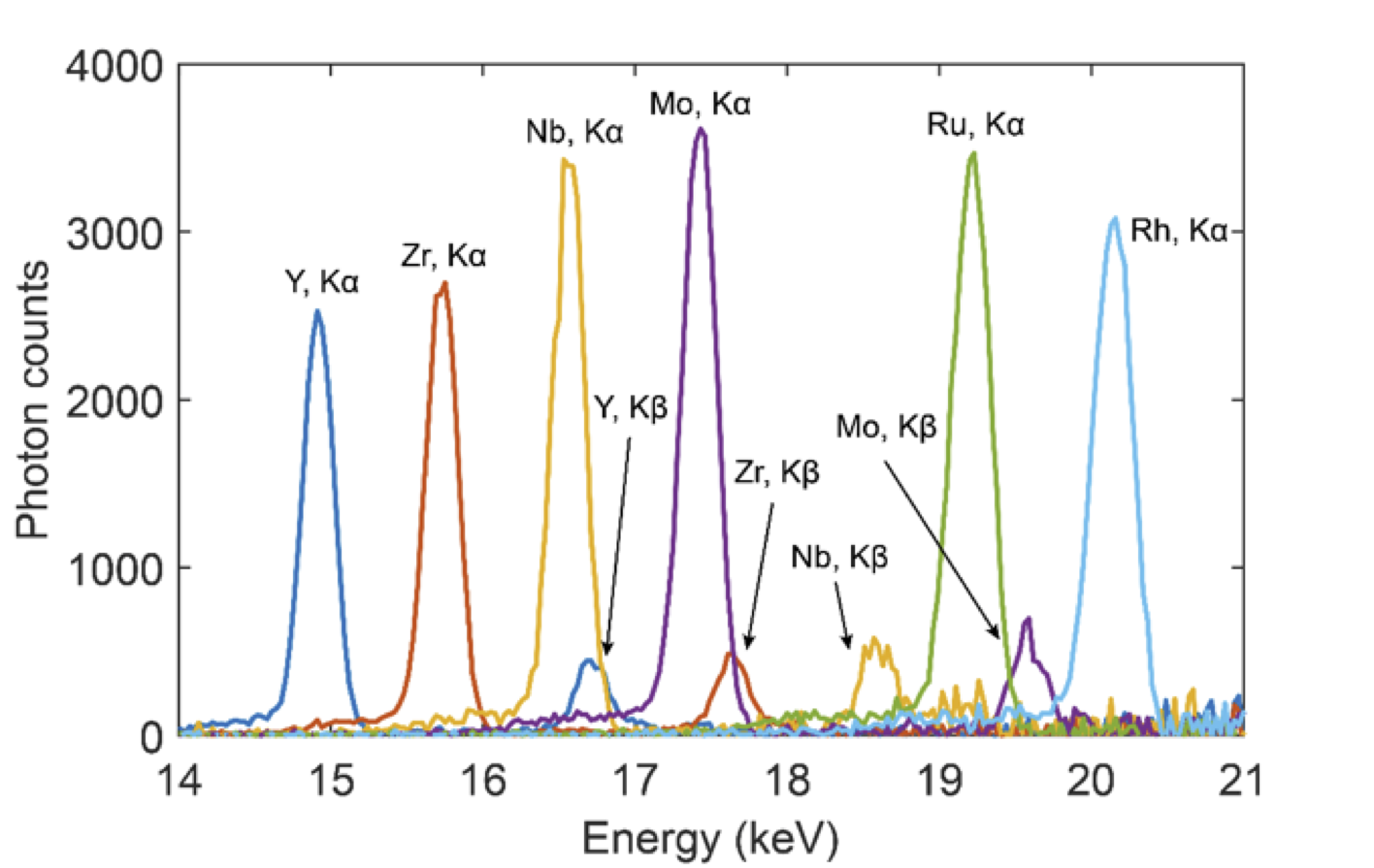
Figure: Overlay of XRF spectra separately recorded for the different nanoparticles, with the background subtracted.
Contrast Media & Molecular Imaging Volume 2018, Article ID 8174820, 7 pages
https://doi.org/10.1155/2018/8174820
------ o ----- o ------ o ----- o ------ o ----- o ------ o ----- o ------ o ----- o ------ o ----
- Recent Publication in Physics in Medicine & Biology
High-spatial-resolution x-ray fluorescence tomography with spectrally matched nanoparticles
Abstract
Present macroscopic biomedical imaging methods provide either morphology with high spatial resolution (e.g. CT) or functional/molecular information with lower resolution (e.g. PET). X-ray fluorescence (XRF) from targeted nanoparticles allows molecular or functional imaging but sensitivity has so far been insufficient resulting in low spatial resolution, despite long exposure times and high dose. In the present paper, we show that laboratory XRF tomography with metal-core nanoparticles (NPs) provides a path to functional/molecular biomedical imaging with ~100 µm resolution in living rodents. The high sensitivity and resolution rely on the combination of a high-brightness liquid-metal-jet x-ray source, pencil-beam optics, photon-counting energy-dispersive detection, and spectrally matched NPs. The method is demonstrated on mice for 3D tumor imaging via passive targeting of in-house-fabricated molybdenum NPs. Exposure times, nanoparticle dose, and radiation dose agree well with in vivo imaging.

© 2018 Institute of Physics and Engineering in Medicine
Physics in Medicine & Biology, Volume 63, Number 16
Focus on nanotechnology in imaging and therapy
------ o ----- o ------ o ----- o ------ o ----- o ------ o ----- o ------ o ----- o ------ o
-
Recent Publication on Metal Assisted Chemical etching of Silicon can be found at:
http://pubs.rsc.org/en/content/articlelanding/2018/ra/c8ra01627e#!divAbstract
Abstract
Metal-assisted chemical etching (MACE) reaction parameters were investigated for the fabrication of specially designed silicon-based X-ray zone plate nanostructures using a gold catalyst pattern and etching solutions composed of HF and H2O2. Etching depth, zone verticality and zone roughness were studied as a function of etching solution composition, temperature and processing time. Homogeneous, vertical etching with increasing depth is observed at increasing H2O2 concentrations and elevated processing temperatures, implying a balance in the hole injection and silica dissolution kinetics at the gold–silicon interface. The etching depth decreases and zone roughness increases at the highest investigated H2O2 concentration and temperature. Possible reasons for these observations are discussed based on reaction chemistry and zone plate design. Optimum MACE conditions are found at HF : H2O2 concentrations of 4.7 M : 0.68 M and room temperature with an etching rate of ≈0.7 μm min−1, which is about an order of magnitude higher than previous reports. Moreover, our results show that a grid catalyst design is important for successful fabrication of vertical high aspect ratio silicon nanostructures.
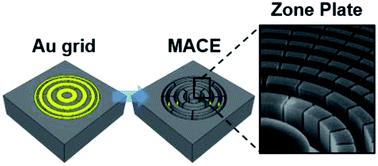
Useful Links
Information about Si Electronics; Band structures, Mobility, etc.
Research in Media
A recent interview about our activities on nano fluids can be found at: https://www.kth.se/aktuellt/nyheter/stort-framsteg-for-nanovatskor-1.571726
Interview on Thermoelectrics can be found at:
https://www.researchgate.net/blog/post/how-we-can-turn-wasted-heat-into-electricity
